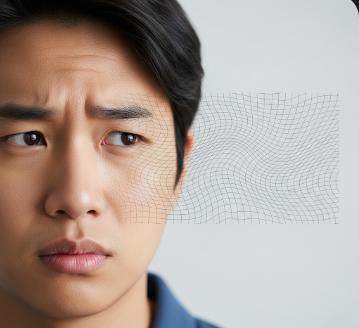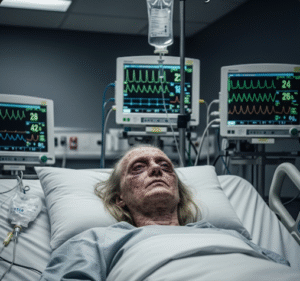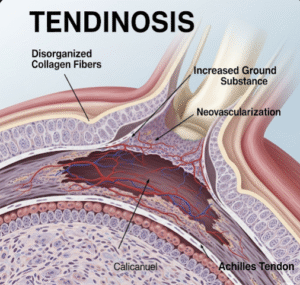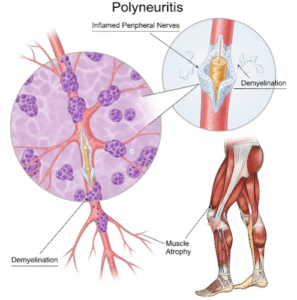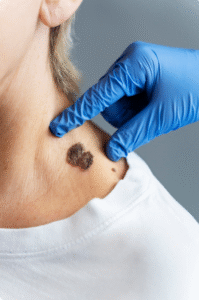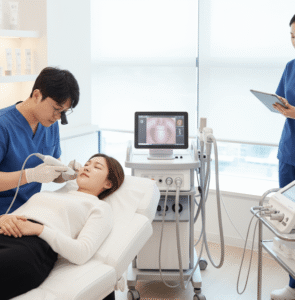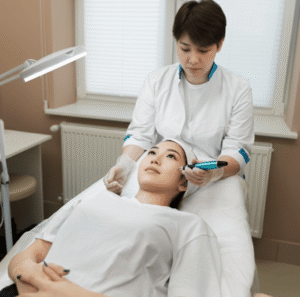Overview
Metamorphopsia is a visual distortion in which straight lines appear wavy, curved, or bent, and objects may look smaller, larger, or misshapen than they really are. It is not a disease itself but a symptom of underlying retinal or neurological disorders. Most commonly, it is linked to conditions affecting the macula, the central part of the retina responsible for sharp vision.
In Korea, advanced ophthalmology centers provide state-of-the-art diagnostic tests like Amsler grid screening, optical coherence tomography (OCT), and fluorescein angiography, along with modern treatments such as anti-VEGF injections, laser therapies, and retinal surgeries to manage the underlying causes of metamorphopsia.
Key Facts
➤ Affects central vision and is often associated with macular disease.
➤ Most common in age-related macular degeneration (AMD), macular holes, or retinal swelling.
➤ Early detection is crucial to prevent vision loss.
➤ In Korea, treatment options include retinal imaging, injections, and surgery.
What is Metamorphopsia?
Metamorphopsia is a visual processing disorder where the retina, especially the macula, fails to correctly interpret visual signals. As a result, the brain perceives distorted images, causing straight lines to appear wavy or objects to appear deformed.
Symptoms of Metamorphopsia
Patients may experience:
➔ Straight lines appearing bent or wavy.
➔ Objects looking smaller (micropsia) or larger (macropsia).
➔ Distorted shapes of familiar objects.
➔ Difficulty reading due to wavy or broken letters.
➔ Central vision disturbances.
➔ Trouble recognizing faces or fine details.
Causes of Metamorphopsia
Metamorphopsia usually originates from macular or retinal dysfunction.
Common Causes
➔ Age-related macular degeneration (AMD).
➔ Macular hole.
➔ Epiretinal membrane (macular pucker).
➔ Retinal detachment or swelling.
➔ Diabetic macular edema.
➔ Central serous chorioretinopathy (CSCR).
Other Causes
➔ Eye trauma.
➔ Post-surgical retinal changes.
➔ Neurological conditions affecting visual pathways.
Risk Factors
➔ Age above 50 (especially for AMD).
➔ Diabetes mellitus.
➔ Hypertension and cardiovascular disease.
➔ Smoking.
➔ Family history of retinal diseases.
➔ Eye injuries or previous retinal surgery.
Complications
If left untreated, underlying conditions causing metamorphopsia can lead to:
➔ Severe central vision loss.
➔ Permanent macular damage.
➔ Impaired daily activities (reading, driving, facial recognition).
➔ Reduced quality of life.
Diagnosis
Doctors use the following tests to confirm metamorphopsia:
➔ Amsler Grid Test – checking for wavy or missing lines.
➔ Optical Coherence Tomography (OCT) – detailed imaging of retinal layers.
➔ Fundus photography – to assess retinal damage.
➔ Fluorescein angiography – for detecting abnormal retinal blood vessels.
Treatment Options
Treatment focuses on the underlying cause of metamorphopsia.
Lifestyle & Supportive Care
➔ Use of magnifying aids for reading.
➔ Bright lighting to improve vision.
➔ Nutritional supplements (lutein, zeaxanthin, omega-3s) for macular health.
Medical & Surgical Treatments
➔ Anti-VEGF injections (ranibizumab, aflibercept, bevacizumab) for AMD and macular edema.
➔ Laser photocoagulation or photodynamic therapy for abnormal blood vessels.
➔ Vitrectomy surgery for macular holes or epiretinal membranes.
➔ Corticosteroid injections for retinal swelling.
Treatment Options in Korea
Korea is a leading destination for retinal and macular treatments with high success rates.
Diagnostic Services
➔ Amsler grid screening and OCT.
➔ Advanced fundus photography and angiography.
➔ AI-assisted retinal imaging for early detection.
Medical Treatments in Korea
➔ Cutting-edge anti-VEGF therapy for AMD and diabetic eye disease.
➔ Specialized surgeries for macular hole repair and retinal detachment.
➔ Clinical trials offering access to next-generation retinal treatments.
Rehabilitation & Support
➔ Low-vision rehabilitation programs.
➔ Visual aids and adaptive training for daily life.

